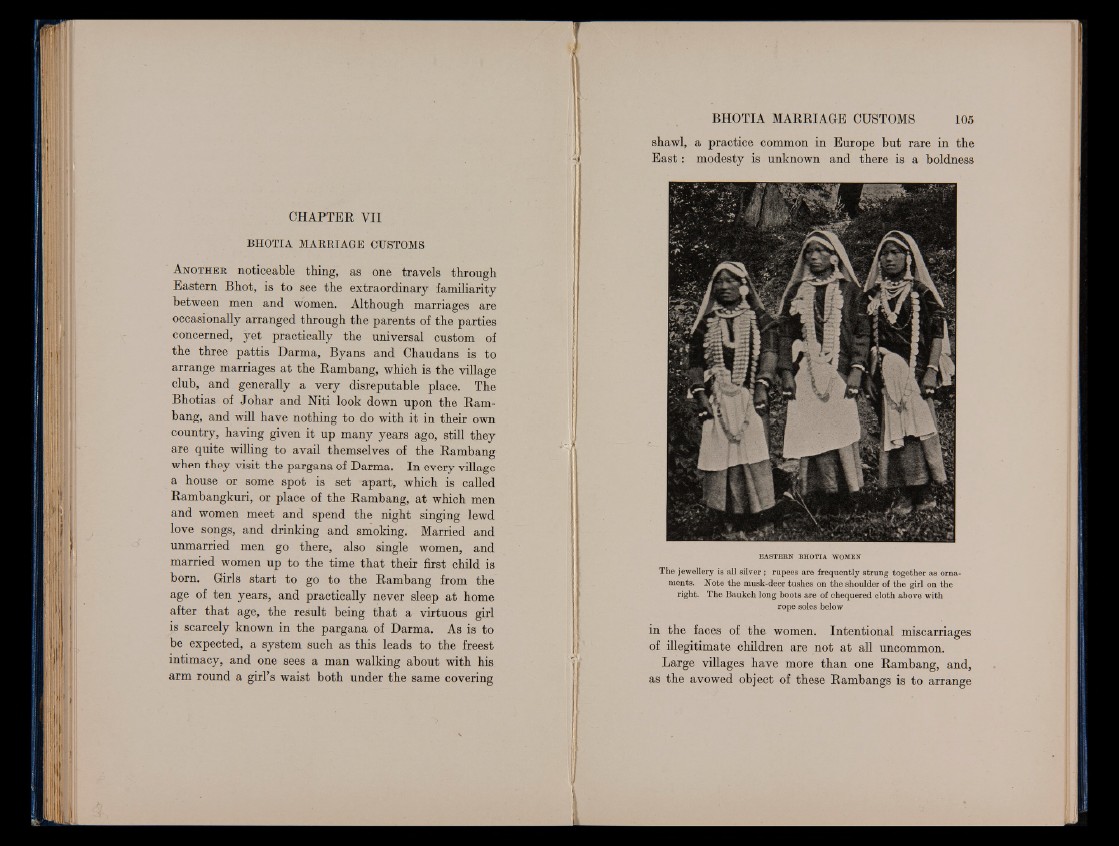
CHAPTER VII
BHOTIA MARRIAGE CUSTOMS
A n o t h e r noticeable thing, as one travels through
Eastern Bhot, is to see the extraordinary familiarity
between men and women. Although marriages are
occasionally arranged through the parents of the parties
concerned, yet practically the universal custom of
the three pattis Darma, Byans and Chaudans is to
arrange marriages at the Rambang, which is the village
club, and generally a very disreputable place. The
Bhotias of Johar and Niti look down upon the Rambang,
and will have nothing to do with it in their own
country, having given it up many years ago, still they
are quite willing to avail themselves of the Rambang
when they visit the pargana of Darma. In every village
a house or some spot is set apart, which is called
Rambangkuri, or place of the Rambang, at which men
and women meet and spend the night singing lewd
love songs, and drinking and smoking. Married and
unmarried men go there, also single women, and
married women up to the time that their first child is
born. Girls start to go to the Rambang from the
age of ten years, and practically never sleep at home
after that age, the result being that a virtuous girl
is scarcely known in the pargana of Darma. As is to
be expected, a system such as this leads to the freest
intimacy, and one sees a man walking about with his
arm round a girl’s waist both under the same covering
shawl, a practice common in Europe but rare in the
East : modesty is unknown and there is a boldness
EASTERN BHOTIA WOMEN
The jewellery is all silver ; rupees are frequently strung together as ornaments.
Note the musk-deer tushes on the shoulder of the girl on the
right. The Baukch long boots are of chequered cloth above with
rope soles below
in the faces of the women. Intentional miscarriages
of illegitimate children are not at all uncommon.
Large villages have more than one Rambang, and,
as the avowed object of these Rambangs is to arrange